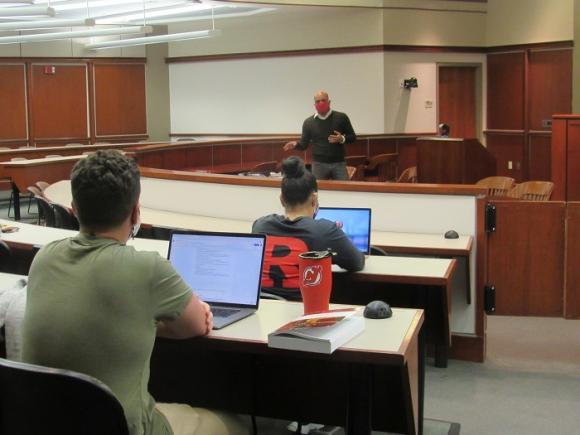Exactly how to Improve Your Situation with Compelling Trial Presentations: Specialist Tips for Attorney
Exactly how to Improve Your Situation with Compelling Trial Presentations: Specialist Tips for Attorney
Blog Article
Navigating the Complexities of Test Presentations: Tips for Seamless Distribution and Engaging Disagreements
In the realm of legal process, the art of trial presentation stands as a critical factor of success. The intricacies inherent in test discussions call for a delicate balance of skill, technique, and ability.

Recognizing Trial Goals
To effectively navigate a trial, it is important to have a clear understanding of the objectives that need to be attained. Prior to stepping right into the courtroom, legal groups need to define their goals and preferred results. These objectives act as assisting concepts throughout the trial, shaping techniques and influencing decision-making processes.
Recognizing trial purposes includes an extensive analysis of the case, legal criteria, and the customer's best rate of interests. Trial Presentations. It calls for a meticulous exam of the truths, determining vital issues, and preparing for potential challenges. By establishing particular and measurable objectives, lawyers can customize their disagreements and presentations to align with the preferred outcomes
Additionally, a clear grip of test goals allows lawful groups to prioritize proof, witnesses, and lawful disagreements properly. It enables the growth of a coherent narrative that resonates with the discretionary, enhancing the total situation discussion.

Organizing Proof Effectively
Having a clear understanding of trial purposes lays the foundation for organizing evidence effectively in legal process. By straightening the discussion of evidence with the preferred end results of the trial, lawful groups can enhance their arguments and improve their persuasiveness.
Another crucial element in organizing proof successfully is establishing a rational circulation. Presenting proof in a meaningful and sequential way can aid develop a compelling narrative that sustains the legal arguments being made. Furthermore, making use of visual aids such as graphes, charts, or timelines can better enhance the organization of evidence and aid in making clear intricate relationships or series of occasions.
In addition, making certain that all proof provided is admissible and appropriate to the case is vital. Irrelevant or inadmissible evidence can interfere with the stamina of the debate and potentially hurt the credibility of the presenting celebration. A precise evaluation and choice process should be carried out to include just the most impactful and lawfully sound evidence in the trial presentation.
Crafting Influential Narratives
Crafting compelling stories plays an essential function in presenting influential debates during legal procedures. A well-crafted narrative has the power to captivate the target market, stimulate emotions, and ultimately persuade the choice for the here and now celebration. When building a story for a test presentation, it is necessary to establish a clear story that highlights bottom lines and connects them in a meaningful fashion. Begin by outlining the realities of the instance in a compelling fashion, making sure that the series of events is simple to follow. Introduce characters properly, offering history info that assists the audience comprehend their activities and motivations. In addition, incorporating vivid summaries and interesting language can bring the narrative to life, image source making it a lot more memorable for the court and jury. By weaving together evidence, statement, and legal disagreements into a cohesive and persuasive narrative, attorneys can properly promote for their clients and increase the possibility of a favorable result click for source in the court room.
Understanding Aesthetic Aids
Efficient use visual help is essential to enhancing the effect and clearness of trial discussions. Visual help, when used purposefully, have the power to streamline complex information, strengthen bottom lines, and leave a long lasting impression on the judge and jury. To understand aesthetic help in trial discussions, it is vital to make certain that they are clear, succinct, and pertinent to the disagreements being made.
When incorporating visual help, such as graphes, photos, charts, or timelines, right into a test presentation, it is vital to maintain them aesthetically appealing yet professional. The visuals should match the verbal debates, supplying an aesthetic depiction of the information being gone over without frustrating the target market with unnecessary information.
Furthermore, exercising with the aesthetic help ahead of time is necessary to make sure a smooth shipment during the trial. Familiarizing oneself with the material, transitions, and timings of each aesthetic visit homepage aid can help keep the flow of the discussion and avoid technical glitches that may arise.
Delivering Impactful Closing Debates
An engaging closing debate serves as the end result of a trial presentation, enveloping the core narrative and convincing the judge and jury in the direction of a positive choice. Begin by outlining the primary debates that sustain your customer's position, highlighting why the proof offered throughout the trial supports your narrative.
In addition, incorporating emotional allure can further reinforce your closing disagreement. By connecting and humanizing the instance on an individual level with the decision-makers, you can evoke compassion and understanding, affecting their understanding of the truths provided. Additionally, reiterating the lawful criteria that should be satisfied for a favorable judgment can enhance the validity of your position. Ultimately, a well-crafted closing disagreement should leave an enduring impression, compelling the discretionary to regulation in your client's support.
Final Thought
In conclusion, grasping test presentations entails recognizing purposes, organizing proof, crafting stories, utilizing aesthetic help, and delivering impactful closing disagreements. By implementing these methods successfully, attorneys can present their situation perfectly and make engaging arguments in the court room. It is vital to browse the intricacies of test presentations with accuracy and ability to achieve success in lawful procedures.
By lining up the presentation of proof with the preferred results of the trial, lawful teams can reinforce their debates and boost their persuasiveness (Trial Presentations). To master visual aids in test discussions, it is crucial to ensure that they are clear, concise, and pertinent to the debates being made
An engaging closing disagreement serves as the culmination of a test presentation, encapsulating the core narrative and convincing the judge and jury towards a favorable decision. Begin by describing the major disagreements that sustain your client's placement, emphasizing why the proof provided throughout the trial sustains your narrative.In conclusion, grasping test presentations involves understanding objectives, arranging proof, crafting narratives, making use of visual help, and delivering impactful closing disagreements.
Report this page